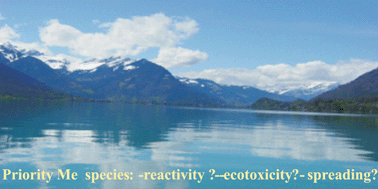The contamination of aquatic ecosystems by natural and anthropogenic metals has lead to a need to better characterize their impact in the environment. To a large extent, the fate and the (eco)toxicity of these elements in aquatic systems are related to their chemical speciation, which may vary continuously in space and time. Detailed measurements of the fraction of specific metal species or groups of homologous metal species and their variation as a function of the bio-physicochemical conditions of the natural media are thus of prime importance. To determine these metal fractions as well as redox chemical species regulating their distribution (dissolved oxygen, sulfides, iron and manganese oxides), new analytical tools capable of performing in situ, real-time monitoring in both water columns and sediments with minimum perturbation of the media are required. This paper reviews the challenges associated with metal speciation studies, and the progress made with state of the art voltammetric techniques to measure the speciation of metals in situ. More specifically, it summarizes the specific conceptual, analytical, and technical criteria that must be considered and/or fulfilled to develop rugged, field deployable, non-perturbing sensors and probes. Strategies used to satisfy these criteria are presented by describing the up-to-date most advanced voltammetric sensors, mini-/micro-integrated analytical systems, and submersible equipments developed for in situ measurements of trace metals and main redox species in aquatic systems. The spatial and temporal resolutions achieved by these news tools represent a significant advantage over traditional laboratory techniques, while simultaneously remaining cost effective. The application of these tools to aquatic systems is illustrated by several examples of unattended and remote in situ monitoring and/or profiling in water columns and sediments.

You have access to this article
 Please wait while we load your content...
Something went wrong. Try again?
Please wait while we load your content...
Something went wrong. Try again?


 Please wait while we load your content...
Please wait while we load your content...